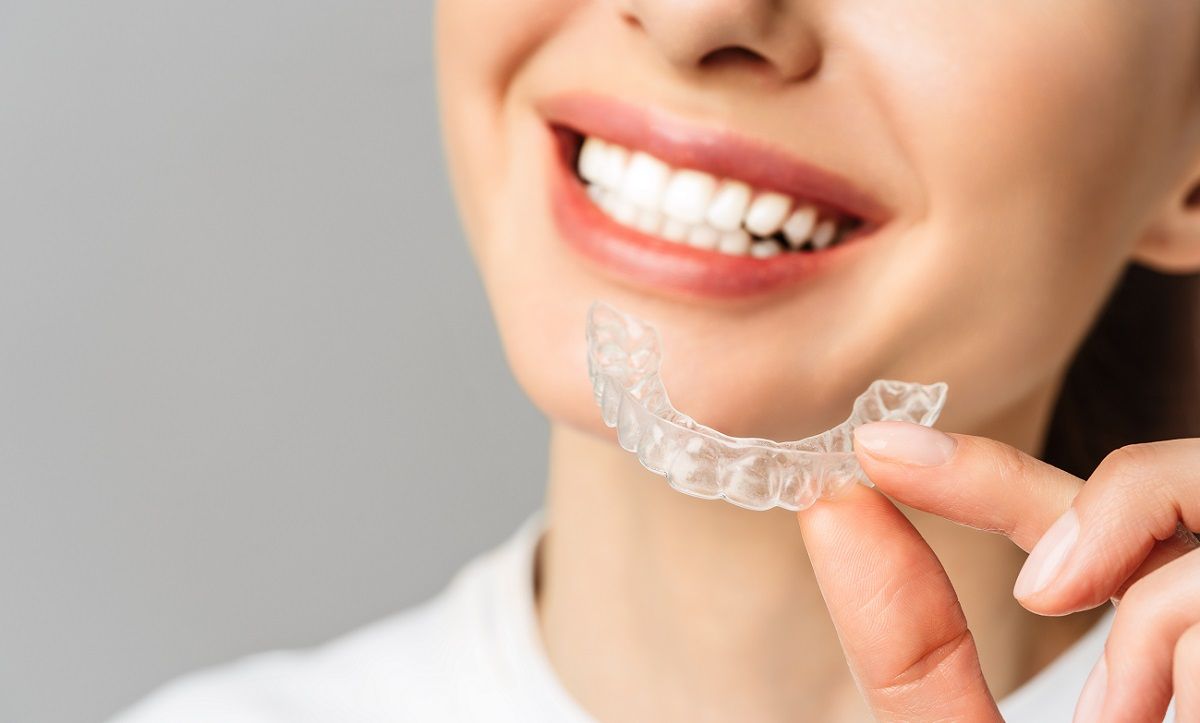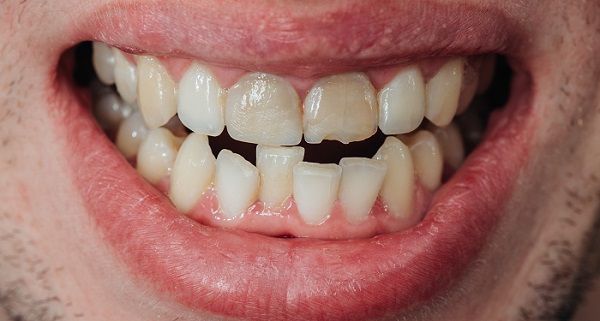

Invisalign Attachments: What You Need to Know.
If you're considering getting Invisalign, you may have heard about attachments. But what are they exactly, and how do they affect your treatment? In this guide, we'll look closer at Invisalign attachments and everything you need to know before starting your orthodontic journey.
Understanding the Purpose of Invisalign Attachments
Invisalign attachments play a crucial role in the success of orthodontic treatment with clear aligners. These small, tooth-colored bumps or ridges are strategically placed on specific teeth during the Invisalign treatment process. Their main purpose is to enhance the effectiveness of tooth movement and optimize the treatment's overall outcome.
One of the critical functions of Invisalign attachments is to provide better grip and control over the aligners. Braces use brackets and wires to force the teeth; however, clear aligners rely on consistent pressure and precise placement to gradually shift the teeth into the desired position. Attachments anchor the aligners, helping them exert force to achieve tooth movement.
Types of Invisalign Attachments
Invisalign attachments come in different shapes and sizes, each designed to have specific purposes in orthodontic treatment. While the exact type and placement of attachments depend on individual treatment plans and dental needs, some common types include:
- Button Attachments: Button attachments are small, round bumps placed on the surface of the teeth to provide additional grip for the aligners. They often facilitate specific tooth movements, such as rotations or extrusions.
- Hook Attachments: Hook attachments feature a small protrusion that engages with elastics or rubber bands. They are typically placed on specific teeth to apply additional force and correct bite discrepancies or jaw alignment issues.
- Ridge Attachments: Ridge attachments are longer and narrower than button attachments, resembling small ridges or grooves on the tooth surface. They are commonly used to assist with aligning teeth or closing gaps by providing a more substantial contact point for the aligners.
- Wing Attachments: Wing attachments extend horizontally from the tooth surface, providing support and stability during treatment. They are often used in cases where significant tooth movement or rotation is required.
- Precision Cuts: Precision cuts are small indentations or notches made in the aligners to accommodate specific teeth or attachments. They ensure a secure fit and proper alignment of the aligners while minimizing discomfort or interference with speech.
- Bite Ramps: Bite ramps are raised areas on the aligners designed to help correct bite issues, such as deep bites or overbites. They encourage proper jaw positioning and bite alignment by guiding the teeth into the desired relationship during treatment.
- Power Ridge Attachments: Power ridge attachments are larger, more prominent attachments that apply increased force to specific teeth. They are handy for complex cases or stubborn tooth movements that require additional pressure to achieve the desired results.
- Interproximal Reduction (IPR) Attachments: In some cases, attachments may be used with interproximal reduction (IPR) to create space between teeth for alignment. These attachments are placed strategically to facilitate controlled tooth reshaping and improve treatment outcomes.
How Invisalign Attachments Work?
Invisalign attachments play a crucial role in the functionality and effectiveness of orthodontic treatment with clear aligners. They work with the aligners to apply controlled forces to the teeth, facilitating tooth movement and alignment. Here's how Invisalign attachments work:
- Enhancing Aligner Grip: Invisalign attachments are small, tooth-colored bumps or ridges bonded to specific teeth' surfaces. These attachments anchor the aligners, providing additional grip and control over tooth movement. Attachments help ensure the aligners stay securely in place throughout treatment by creating frictional contact points between the aligners and the teeth.
- Directing Forces: Attachments are strategically placed on teeth where additional leverage is needed to achieve specific tooth movements. Attachments may be positioned depending on the treatment plan to facilitate rotations, extrusions, intrusions, or other desired adjustments. By creating precise points of contact between the aligners and the teeth, attachments help direct forces more effectively, guiding the teeth into the desired positions over time.

- Customized Design: Each set of Invisalign attachments is customized for the individual patient based on their unique dental anatomy and treatment needs. Orthodontists carefully plan the placement and design of attachments to optimize treatment outcomes and address specific orthodontic concerns. By tailoring the size, shape, and location of attachments, orthodontists can maximize the efficiency and effectiveness of tooth movement while minimizing discomfort and interference with daily activities.
- Supporting Complex Movements: Invisalign attachments enable orthodontists to address a wide range of dental issues, including complex cases that may require more advanced treatment techniques. Attachments provide the necessary support and stability to tackle challenging tooth rotations, align crowded or overlapping teeth, close gaps, and correct bite discrepancies. Attachments expand the scope of treatable conditions and improve overall treatment predictability by enhancing the aligners' ability to apply targeted forces.
- Treatment Monitoring and Adjustment: During the Invisalign treatment process, orthodontists monitor progress and make adjustments to ensure optimal results. Attachments may be modified or replaced during routine appointments to accommodate changes in tooth position or treatment objectives. Orthodontists may incorporate additional attachments or refinements to fine-tune the treatment plan and address any remaining concerns.
Placement Procedure for Invisalign Attachments
Assessment and Treatment Planning
- Before placement, your orthodontist will thoroughly examine your teeth and jaws to assess your orthodontic needs.
- Based on this assessment, a customized treatment plan will be developed to address your specific dental concerns and achieve your desired outcomes with Invisalign.
Attachment Selection
- Your orthodontist will select the appropriate types and sizes of attachments based on your treatment plan and the specific tooth movements required.
- The selection process considers factors such as the location of the attachments, the type of tooth movement needed, and the overall treatment objectives.
Tooth Preparation
- Before attaching the Invisalign attachments, your teeth will be cleaned and polished to ensure optimal bonding.
- Sometimes, a small amount of enamel may be gently roughened or etched to enhance the bond between the attachment and the tooth surface.
Attachment Bonding
- Using dental adhesive, your orthodontist will carefully bond the attachments to the surface of the selected teeth.
- Each attachment will be precisely positioned according to the treatment plan, ensuring optimal alignment and functionality.
- The adhesive used for bonding is tooth-colored and blends seamlessly with your natural teeth, providing a discreet appearance during treatment.
Curing and Polishing
- Once the attachments are in place, a special curing light may be used to harden the adhesive and secure the attachments to the teeth.
- Any excess adhesive will be removed, and the attachments will be polished to smooth out rough edges and ensure a comfortable fit with the aligners.
Aligner Placement
- After the attachments have been bonded to your teeth, you will receive your first set of Invisalign aligners.
- The aligners will be carefully fitted over your teeth, with the attachments providing additional grip and stability to ensure proper alignment and tooth movement.
- Your orthodontist will provide instructions on wearing and caring for your aligners and information on when to change to the next set of aligners in your treatment series.

Role of Attachments in Achieving Treatment Goals
- Enhanced Precision: Attachments provide additional grip and control over tooth movement, allowing orthodontists to achieve more precise and predictable results. By creating frictional contact points between the aligners and the teeth, attachments help guide teeth into the desired positions with greater accuracy, minimizing the need for additional refinements or adjustments.
- Facilitated Tooth Movements: Invisalign attachments are strategically positioned to facilitate various tooth movements, such as rotations, extrusions, intrusions, or corrections of complex dental issues. By applying targeted forces to specific teeth, attachments help overcome resistance and encourage the desired changes in tooth position, ultimately aligning the teeth according to the treatment plan.
- Addressing Complex Cases: Attachments enable orthodontists to tackle many orthodontic concerns, including complex cases that may require more advanced treatment approaches. Attachments provide the support and stability needed to achieve optimal outcomes in challenging situations, whether correcting severe crowding, closing gaps, or aligning misaligned teeth.
- Improved Treatment Efficiency: By enhancing the effectiveness of clear aligners, attachments contribute to treatment efficiency by reducing the overall duration of orthodontic treatment. With attachments, orthodontists can achieve desired tooth movements more quickly and with fewer refinements, allowing patients to enjoy a shorter treatment timeline and faster progress toward their treatment goals.
- Minimized Discomfort: Invisalign attachments help distribute forces evenly across the teeth, reducing discomfort associated with orthodontic treatment. Attachments minimize the likelihood of aligners slipping or shifting during wear by providing additional grip and support, ensuring patients a more comfortable and consistent treatment experience.
- Patient Satisfaction: The role of attachments in achieving treatment goals extends beyond clinical outcomes to patient satisfaction. Attachments enhance patient experience and increase confidence in the orthodontic process by improving the effectiveness and efficiency of Invisalign treatment. Patients can see tangible progress toward their treatment goals, leading to greater satisfaction with their orthodontic journey.
Contact your Lafayette dentist, Dr. Massood Darvishzadeh, DDS at Lafayette Dental Group, to learn what you need to know about Invisalign Attachments.
Resource:
*This media/content or any other on this website does not prescribe, recommend, or prevent any treatment or procedure. Therefore, we highly recommend that you get the advice of a qualified dentist or other medical practitioners regarding your specific dental condition.*
Services
Contact Us
3466 Mt Diablo Blvd., Suite C207
Lafayette, CA 94549
2025 © Lafayette Dental Group | All rights reserved | Powered by: Vigorant, Inc.
